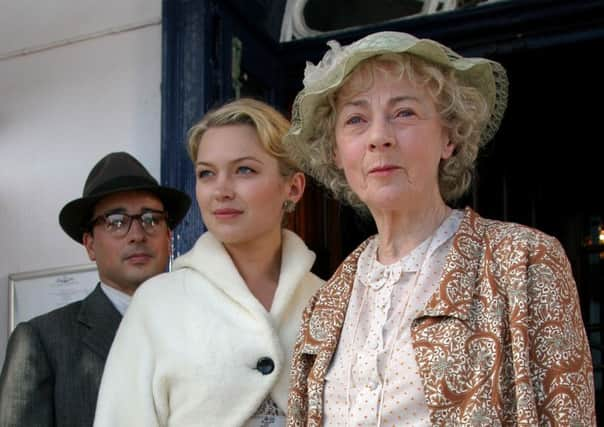Experts solve Agatha Christie ‘whodunnit’ secrets


As the best-selling author’s fans celebrate the 125th anniversary of her birth, experts say where the novel is set, the primary means of transport used throughout the book and how the victim dies are all key factors that give away who the killer is.
The killer will be introduced within the first half of the book and is likely to be emotionally involved with the victim, according to the research commissioned by UKTV channel Drama.
Advertisement
Hide AdAdvertisement
Hide AdAn expert panel – including Dr James Bernthal from the University of Exeter, Dr Dominique Jeannerod, senior research fellow at the Institute for Collaborative Research in the Humanities at Queen’s University Belfast, and data analyst Brett Jacob – analysed a selection of Christie’s mystery novels including Death On The Nile and Murder On The Orient Express.
They found that if there are a lot of land vehicles in the story, the killer is most likely female and if there are a lot of nautical vehicles and aircraft in the story, the killer is most likely male.
The research showed that if the victim is strangled, the killer is most likely male, or male with a female accomplice, and if the setting is a country house, the killer is most likely female.
Language used throughout the book to describe a female killer is usually more negative than when describing a male killer, the experts found.
Analysis showed female killers are normally discovered due to a domestic item and male killers are normally found out through information or logic.
The panel found that if Hercule Poirot is the detective and the cause of death is stabbing, the killer will be mentioned more frequently at the beginning of the book.
But if Miss Marple is the detective and the motive for the murder is money or an affair, the killer will be mentioned more in the later stages of the novel than the beginning.
Dr Bernthal said Christie’s novels tend to include a “main clue” which is revealed approximately halfway through the text and will usually be highlighted as it appears in the text so the reader is likely to remember it.
Advertisement
Hide AdAdvertisement
Hide AdMeanwhile, according to the team of researchers led by Jeannerod, a key element of Christie’s writing style is to keep it simple – using middle-range language and repeating it.
The research was commissioned by Drama to celebrate their Agatha Christie Hour.
The TV channel is screening ten of her most famous stories on weekdays at 8pm on 3 to 14 August to mark the 125th anniversary of her birth.
Adrian Wills, general manager for Drama, said: “Given her ongoing popularity, we wanted to know her formula for success, especially since the whodunnit is such a classic of the crime drama genre.
“We hope that her legions of dedicated fans will revisit their favourite whodunnits with a better understanding of how to crack the ultimate code.”
The later the book was published, the more the murderer will be mentioned throughout the novel.
In fact, it was found that on average, Christie mentions the killer 11.7 more times with each new novel written. The 125th anniversary is also being celebrated in Scotland next month at the Bloody Scotland crime writing festival in Stirling.
Dr Kathryn Harkup, author of the book A is for Arsenic, and Christie expert Ragnar Jonasson, who translates her books into Icelandic, will discuss the poisons Christie used to kill the vast majority of her “victims”.
Advertisement
Hide AdAdvertisement
Hide AdChristie wrote more than 100 novels over 56 years of which 66 were detective novels.
She became a Dame of the British Empire in 1971 and died five years later.
At the time of her death, she was the best-selling English novelist of all time.